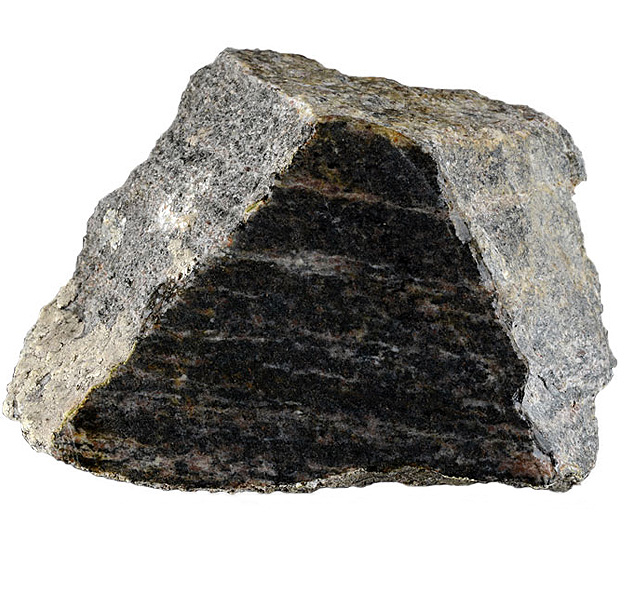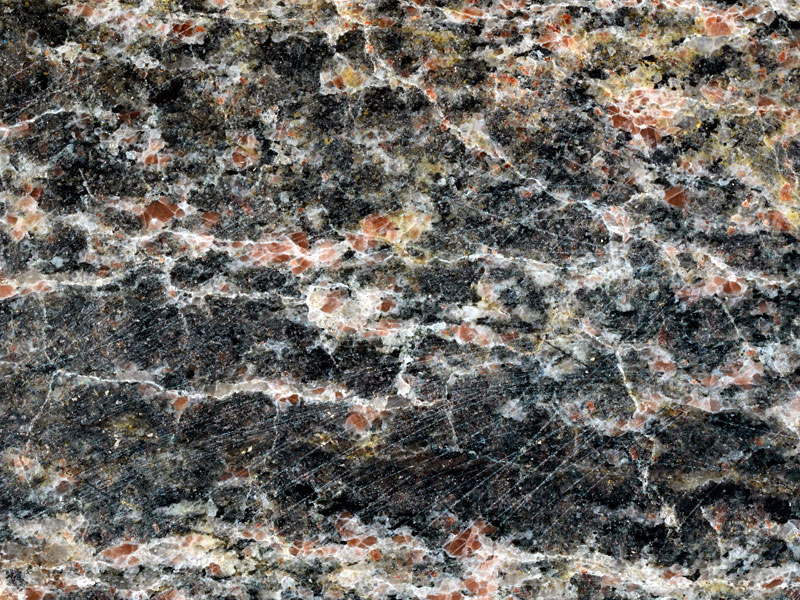
Fact sheet
This garnet-rich, high-grade Lewisian rock comes from Roneval on South Harris in the Western Isles of Scotland. The rock was subjected to deep burial and temperatures exceeding 800 °C during the Proterozoic Laxfordian orogeny. The origin of this rock is difficult to determine but it may have been a granite intruded into the Archean Lewisian prior to regional metamorphism.
In thin section the rock is dominated by garnet, amphibole and plagioclase feldspar, with some scapolite. The garnet grains are surrounded by particularly good examples of symplectite (an intergrowth of two minerals at a scale of a few microns formed when another mineral breaks down) texture, and are strongly denuded by reactions that occurred as the rock travelled from its deepest point towards the surface, cooling and decompressing to form plagioclase and pyroxene (later altered to amphibole).
The United Kingdom Virtual Microscope (UKVM) collection consists of igneous, sedimentary and metamorphic rocks from around the UK.
It is intended as a teaching resource, helping to tell the story of the common rock types and how they form, and reflecting the history of the UK at the margins of the continent of Europe. The collection is a series of teaching sets, for example igneous rocks from the North Atlantic Igneous Province and SW England; high-temperature metamorphic rocks from Scotland and low-temperature metamorphic rocks from Wales; and sedimentary rocks, including English limestones and sandstones.






